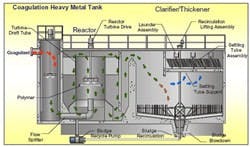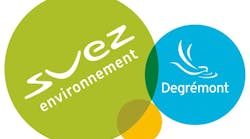AREVA Resources Canada, Inc. operates uranium mining and milling facilities at McClean Lake in Northern Saskatchewan and is designing additional open pit mining capacity for uranium-rich ore at the Midwest Uranium Mine Project site about 800 km north of Saskatoon, Saskatchewan.
A multi-stage water treatment system with both physical-chemical and reverse osmosis (RO) membrane treatment has been selected to treat the combined influent groundwater and mine pit water to very strict effluent and residual waste volume requirements.
Treatment Goals and Challenges
The treated effluent must meet very stringent Canadian requirements. Liquid and solid waste volumes have to be minimized for offsite disposal, and the site’s isolated location requires waste to be hauled by truck over long distances, often along treacherous roads. That means safety factors and high transportation costs are important considerations.
The area’s prevailing winter-like conditions also allow for only a limited construction period, between June and December. Therefore, it is necessary to simplify constructability requirements onsite by including preassembled and skid-mounted equipment.
The project calls for a relatively large total flow rate of about 4,500 gal per minute (gpm) or 25,000 m3/day (80% groundwater, 20% mine pit water).
The Solution
This treatment objective is met using the following process:
Stage 1 : Metals removal by physical-chemical precipitation at high pH.
Stage 2 : Metals removal by the first RO system treatment, including pre-filters (multimedia and cartridge), and RO reject metals removal by physical-chemical precipitation.
Stage 3 : Metals removal by the second RO treatment, including pre-filters (multimedia and cartridge), and RO reject metals removal by physical-chemical precipitation.
Stage 4 : Sludge dewatering system concentrates the solids and minimizes the offsite disposal volume.
Benefits
Degremont has years of experience and references in industrial metals removal process at very cold water temperatures (4 to 10? C), similar to Areva’s Midwest site requirements. To confirm the process design, an extended onsite pilot study was conducted using actual mining wastewater at AREVA’s site.
The RO systems provide savings in power consumption of up to 50% because of a combination of low-energy and high-rejection RO membranes, which are used in the design. The low-energy membranes operate at around 200 psi and the high-rejection membranes operate at greater than 400 psi.
The overall design supports AREVA’s constructability and portability requirements, minimizing initial installation time as well as subsequent transport and reinstallation time at a future site if needed.



